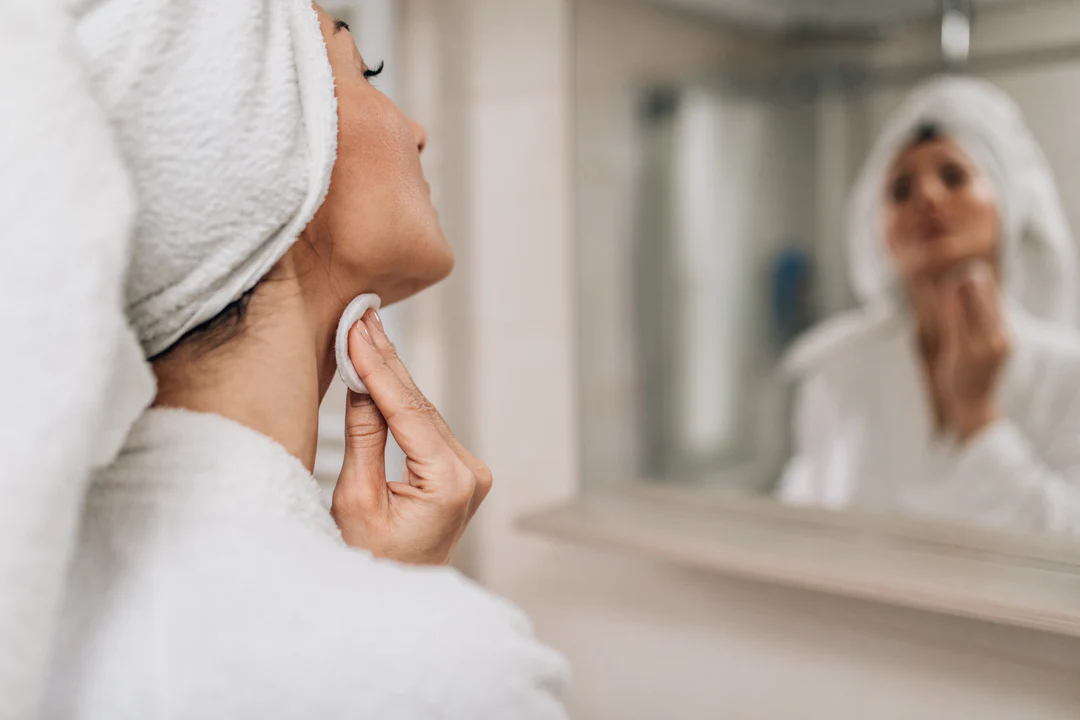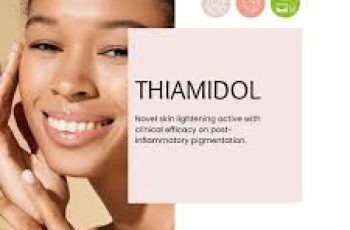Can Alpha Lipoic Acid be used with Niacinamide?
When it comes to skin care, we all know that using antioxidant-rich formulas and ingredients is the best way to ensure that our skin stays at its healthiest. Luckily, there are some ingredients that can deliver more impressive results than others. Alpha-lipoic acid is one of the most commonly used ingredients to help the skin and body reap the benefits. Alpha-lipoic acid has been shown to have antioxidant power that is over 40,000% stronger than vitamins C and E combined.
So is this powerful ingredient what you’re missing from your skin care routine? Can you use alpha lipoic acid with niacinamide? Let’s dive in and learn how to use these ingredients effectively.
What is Niacinamide?
Niacinamide is a form of vitamin B3 that is commonly found in skin care formulas like serums. It is known for its ability to reduce signs of aging like fine lines and wrinkles, as well as its beneficial hydrating properties. When applied topically, you’ll see a noticeable difference in overall skin hydration. It does this through its hydrating properties that I mentioned earlier. This is achieved by the moisture around the face being absorbed into the skin and locked there. This ensures that the skin’s natural protective barrier is strengthened and protected against free radical damage caused by UV rays, pollution, central heating, harsh climates and other environmental aggressors.
You’ll also find that Niacinamide has anti-inflammatory properties that help soothe irritated skin, making it an ideal ingredient to add to your daily routine if you have a dry or sensitive skin type. Not only do dry skin types benefit from Niacinamide, but oily and impure skin types also benefit from this clever powerhouse. Another unique property of Niacinamide is its ability to regulate oil production, preventing overproduction of sebum (the natural oil in the skin) which can lead to acne and breakouts.
If you’d like to learn more about Niacinamide and its effects on the skin, read our dedicated blog post.
What is Alpha Lipoic Acid?
Alpha-lipoic acid is an enzyme found naturally in the body and is used in a number of skin care products. It is known for its high levels of antioxidants, with a higher free radical-fighting capacity than vitamins C and E, two standalone ingredients that are often considered unrivalled when it comes to antioxidants.
Alpha-lipoic acid can benefit you by taking it as a dietary supplement in capsule form or by consuming it in large quantities in foods such as red meat, spinach, broccoli, tomatoes, and Brussels sprouts. By taking it as a dietary supplement, you can protect your body from all the damage caused by free radicals from the inside. Of course, you can also apply it topically to your skin, but there is a downside to this powerful powerhouse: increased sensitivity to the sun can lead to sunburn and long-term sun damage. Be sure to wear SPF sunscreen every day to fully protect your skin and protect it from the sun.
What Not to Mix with Niacinamide?
Vitamin C is the main ingredient that should not be mixed with Niacinamide. Although both contain a lot of antioxidants, they do not work well together. This is because each ingredient has similar effects on the skin. When mixed, they begin to cancel each other out, rendering each ingredient completely useless.
However, this does not mean that you should not use Niacinamide and Vitamin C in your daily routine. Many people find that changing the time of day when they use the ingredients ensures that the skin benefits without having to worry about adverse side effects such as dryness, itching, or redness. Serums enriched with Vitamin C tend to leave skin glowing and full of vitality. I personally think this is the best ingredient to add to your morning routine to fight free radicals throughout the day and give your complexion a healthy, radiant glow. Then, incorporate Niacinamide into your evening skincare routine to moisturize and repair the skin after a day of free radical UV exposure.
What can alpha lipoic acid be mixed with?
There are very few substances that can be mixed with alpha lipoic acid. In fact, it is often included in some product formulas to enhance antioxidant protection. However, little is known about the benefits of ALA for the skin. This is something to consider if you want to introduce it into your daily routine. To be safe, I recommend consulting a doctor, dermatologist, or medical professional before applying to your skin. If you want to be extra cautious, you can also do a patch test and take a 10p-sized amount and apply it to the inside of your forearm. Leave it on for 24 hours. If there are no signs of irritation, then your skin is happy with the use of ALA.
Can Niacinamide be used daily?
Yes, you can definitely use Niacinamide daily, even twice a day. Many people find it to be a very useful ingredient to apply at night before applying powerful skin ingredients like retinol due to its hydrating properties. Not only does niacinamide counteract the potential drying caused by retinol and other acids like salicylic acid, it also helps other active ingredients absorb into the skin quickly and effectively.
Can I mix niacinamide with hyaluronic acid?
Of course, the combination of niacinamide and hyaluronic acid provides the ultimate hydration for the skin. Ideally, I recommend applying hyaluronic acid first, as this attracts moisture and locks it in place. Applying niacinamide afterward allows this powerhouse to focus on regulating oil production and minimizing the appearance of pores.
Below is more information on using alpha-lipoic acid with niacinamide. Remember, if you have any questions, feel free to follow us on Instagram.
DQH Knowledge drop: In your 20s, your skin cell turnover decreases. (Cell turnover is a key component in keeping your skin youthful.) You know what else slows down? Your collagen production. Starting in your 20s, collagen decreases by about 1 percent per year. Should you want to prevent fine lines and wrinkles, start by eliminating behaviors that contribute to premature aging. “If it’s bad for you, it’s bad for your skin,” says dermatologist Michel Somenek.
“Cigarette smoking reduces blood flow to the skin and causes premature wrinkling and a dull skin texture. Making the repeated pursed motion to inhale can also cause smoker’s lines. Alcohol and recreational drugs are toxins for the skin that damage its cellular structure and DNA,” Somenek tells us. “The faster you eliminate vices while you are young, the better chance your skin and body have to recuperate.” Also, adopting an anti-aging routine in your 20s is key. After all, the best offense is a good defense. We spoke to Somenek and experts Joshua Ross and Audrey Kunin to find out more.
Keep reading for the best anti-aging products for your 20s, according to skincare professionals.
Sunscreen
“We all know that the sun is the number one cause of skin aging and starting the prevention in your 20s is very important,” Ross says. “The majority of your sun damage won’t start to appear until you’re in your 30s, so don’t wait until you see it surface or you’ll be behind the curve. Stay ahead of it with a good-quality zinc-based sunscreen worn daily.”
Farmacy Green Defense Daily Mineral Sunscreen
An invisible sunscreen with SPF 30, plus botanical extracts meant to protect skin with tons of antioxidants. Bonus: It’s clean and fine to use under makeup.
Bareminerals Complexion Rescue™ Tinted Moisturizer Broad Spectrum SPF 30
Although we recommend you use your SPF and moisturizer separately, we also understand moments when you don’t have time or energy for that extra step. For those times, this bareMinerals moisturizer is a great thing to have on hand.
Vitamin C Serum
“A great introduction to anti-aging is to start with a vitamin C serum in your morning skincare routine,” Ross says. “It’s a powerful antioxidant that will neutralize free radicals and brighten the skin.” He adds that it’s a great way to counteract the effects of the sun’s harmful rays, which, as previously mentioned, are among the biggest causes of premature aging.
Drunk Elephant C-Firma™ Vitamin C Day Serum
The Drunk Elephant C-Firma is a lightweight serum that promises to give skin a glow by combining the brightening powers of vitamin C with ferulic acid, l-ascorbic acid, and vitamin E. The included sodium hyaluronate is meant to replace hydration loss, so you shouldn’t have to deal with any irritation.
Sunday Riley C.E.O. Rapid Flash Brightening Serum
This potent serum is jam-packed with vitamin C (15 percent, to be exact), which means it’s a potential superstar at both brightening skin and dousing it in antioxidants.
Peptides
Using peptides on your skin has many benefits, says Somenek. “The skin barrier is what defends the body against pollution, UV rays, bacteria, and toxins. It can be damaged by several everyday factors. Using topical peptides aids in building a stronger barrier,” he says. “Peptides comprise elastic fibers, which are a type of protein. These fibers help to make skin appear taut and firm. Peptides can also help repair damaged skin, relieve inflammation, and even out skin tone. Some peptides can kill acne-causing bacteria that is common in 20-somethings.”
Kunin agrees, saying, “Peptides are an excellent entry point for supporting collagen.” She recommends looking for face and eye treatments that contain these collagen-boosting powerhouses.
Charlotte Tilbury Magic Eye Rescue Cream
This Charlotte Tilbury super-emollient eye cream has a base of coconut oil and shea butter (read: it’s incredibly hydrating). Botanicals plus peptides are meant to help reduce dark circles and boost collagen, respectively.
This creamy moisturizer serves up potent collagen-boosting peptides and pycnogenol, and antioxidant-rich vitamin C. “Instead of sitting on top of the skin, peptides penetrate the outer layer so they go deep. The ‘signals’ they send tell the cells to produce elastin and collagen, which are needed for youthful-looking skin,” explains Somenek.
At-Home Peel Pads
Remember that skin cell turnover fiasco we talked about earlier? One way to help support it is by exfoliating. “Exfoliation is important to help keep skin fresh and luminous,” Kunin says. She recommends using at-home peel pads as an easy and effective way to exfoliate.
“The goal in your 20s is to fight the slowing pace of cell turnover. It is wise to use products that gently exfoliate, yet still remove oil and other impurities. Products that have Alpha Hydroxy Acids (AHA) or Beta Hydroxy Acids (BHA) are a good choice.”
According to Somenek, you should only exfoliate two to three times a week. “People of all ages are guilty of over-exfoliating and that can be too much of a good thing,” he says.
Dermadoctor Kakadu C Intensive Vitamin C Peel Pad
A few swipes of this Derma Doctor powerful peel pad promise to leave your skin glowing and smooth, thanks to the seven (yes, seven) types of chemical exfoliants, including AHA and BHA. It also contains vitamin C via Kakadu plum extract for added brightening and antioxidant protection.
KEY INGREDIENTS Kakadu plum extract is sourced from the Kakadu plum, a fruit grown in northern Australia. It contains vitamin C, which restores the skin’s natural barrier, increases collagen production, and soothes irritation.
Dr. Dennis Gross Skincare Alpha Beta® Universal Daily Peel Pads
These are the gold standard of peel pads, with a cult following and over 900 five-star reviews on Sephora. They’re easy to use and contain a blend of anti-aging exfoliating acids.
Emollient Night Cream
“In your 20s, you need to start upping the hydration in your skincare routine. You may have been cautious of over-moisturizing because of acne in your teens, but as you enter your 20s, your skin transitions and becomes drier,” Ross says. “I recommend an emollient night cream added into your evening skincare regimen.”
“Twenty-somethings need to make sure that they are not using creams that will clog their pores and cause excess oil production,” says Somenek. Opt for non-comedogenic products.
Cerave Skin Renewing Night Cream
One great choice is the CeraVe Skin Renewing Night Cream, which is a non-comedogenic night cream that leaves skin soft and glowy. It combines the moisturizing powers of ceramides and hyaluronic acid.
RoC Retinol Correxion Max Hydration Creme
“The best night cream ingredients contain retinol, benzoyl peroxide, and/or salicylic acid or hyaluronic acid. The goal is to moisturize, yet remove excess oil,” says Somenek. This Roc Retinol Correxion cream fits the bill as it contains both hyaluronic acid and retinol so it promises to moisturize while also being non-comedogenic.



